More homes bright futures



In a difficult year, we’ve re-focused on our core business, using our financial strength and partnerships to deliver for our customers.
Provided 2,837 new customers with a home
Invested £82.1m in our existing homes
8.7/10 customer satisfaction with repairs
Helped 257 customers get back to work or enrol on a training course
Completed 1,390 new homes
Secured £5.8m of unclaimed benefits/ income for customers
Rated G1 for governance and V1 for financial viability by the regulator of social housing
427,938 customer contacts received by customer experience team
112,309 responsive repairs completed

I’m genuinely proud of the way we’ve supported our customers dealing with the many and varied headwinds they and the housing sector have faced.
Our operating climate has continued to suffer the consequences of the ongoing cost of living crisis and the persistence of the country’s inflationary environment. But in a testing year, we have remained true to our vision and our purpose – more homes, bright futures. Our resolve to provide for our current and future customers has never been stronger.
The whole sector is now grappling with the task of rebuilding trust in Housing Associations. It is only right that where there has been poor practice and poor governance in the sector, this should be highlighted and addressed, through regulation, through steps taken to ensure that when people do move into an affordable home, they are provided with the service they expect and treated the way we all like to be treated.
Against this backdrop, the regulatory and policy environment has shifted. The proposals to reform national planning policy, and new legislation from building safety to tenant satisfaction measures, have presented us with new challenges.
In recognising the changing policy and regulatory landscape over the last year, we’ve stepped up our efforts working to positively influence the environment we’re operating in. We have contributed our views and thoughts on solutions with Government, elected representatives and officials in a constructive manner, including on the National Planning Policy Framework and the House of Lords Digital and Social Exclusion Inquiry.
Through our good governance and strong financial management, we’ve been able to tackle our priorities meaningfully, including maintaining a healthy new development pipeline, at a time when many others had hard choices to make.
While we have achieved a great deal to provide quality homes and services over the last year, we must continue to challenge ourselves to deliver even more homes and even more bright futures.

We head into the next financial year with a sharp focus and with the benefit that being tested often brings. I’m committed to playing my part in helping the VIVID team achieve the performance and the results that our existing and future customers need and deserve.
Charles Alexander
 Mark Perry
Mark Perry
As Charles says, the sector is certainly being tested. But the pressures we’re facing as a sector and organisation need to be put in context. Our customers are dealing with the ongoing cost of living crisis and the continuing shortage of good quality low-cost housing.
We want people to be proud of their homes and communities. By listening to our customers, we’ve an even clearer understanding of what’s really important, what we’re doing well and what causes the most frustration.
Feedback shows that when we have contact with our customers, for example to complete a repair to their home or answer tenancy queries, we’re rated highly but there’s a gap between this and customers’ overall perception of us.
The feedback tells us that there are specific things which will make the most difference to customers and we’re taking swift action to improve.
• Creating clear service standards to make sure our everyone knows what we offer and what to expect from us
• Getting repairs done more quickly and right first time
• Making it easier to contact us, responding more quickly and keeping customers better informed
Through our business-wide transformation programme, we’re changing the way we work, investing in technology and our people to make it easier to contact us. Our new customer online account is due to be launched later this year. This is a strategic project for us with significant investment to help drive a step change in service and customer experience. I’m looking forward to being able to provide more updates on this.
We’ve continued to invest in our homes and part of this has been improving their energy efficiency to reduce the cost of living. We’re delighted to have secured £4.6m of funding from the Government’s Social Housing Decarbonisation Fund to improve the energy efficiency of 400 homes in North Hampshire.
We all know that our broader neighbourhood plays an important role in our lives, so we’ve kickstarted an investment programme into a number of our estates. Improvements will be shaped working together and through consultation with our customers.
Our charitable arm, VIVID Plus, now in its third year, has continued to provide valuable services and support. Among its great work is securing £5.8m of extra income for our customers. We’ve invested over £250,000 in place shaping projects, and seen 448 customers supported by our employment and training team.
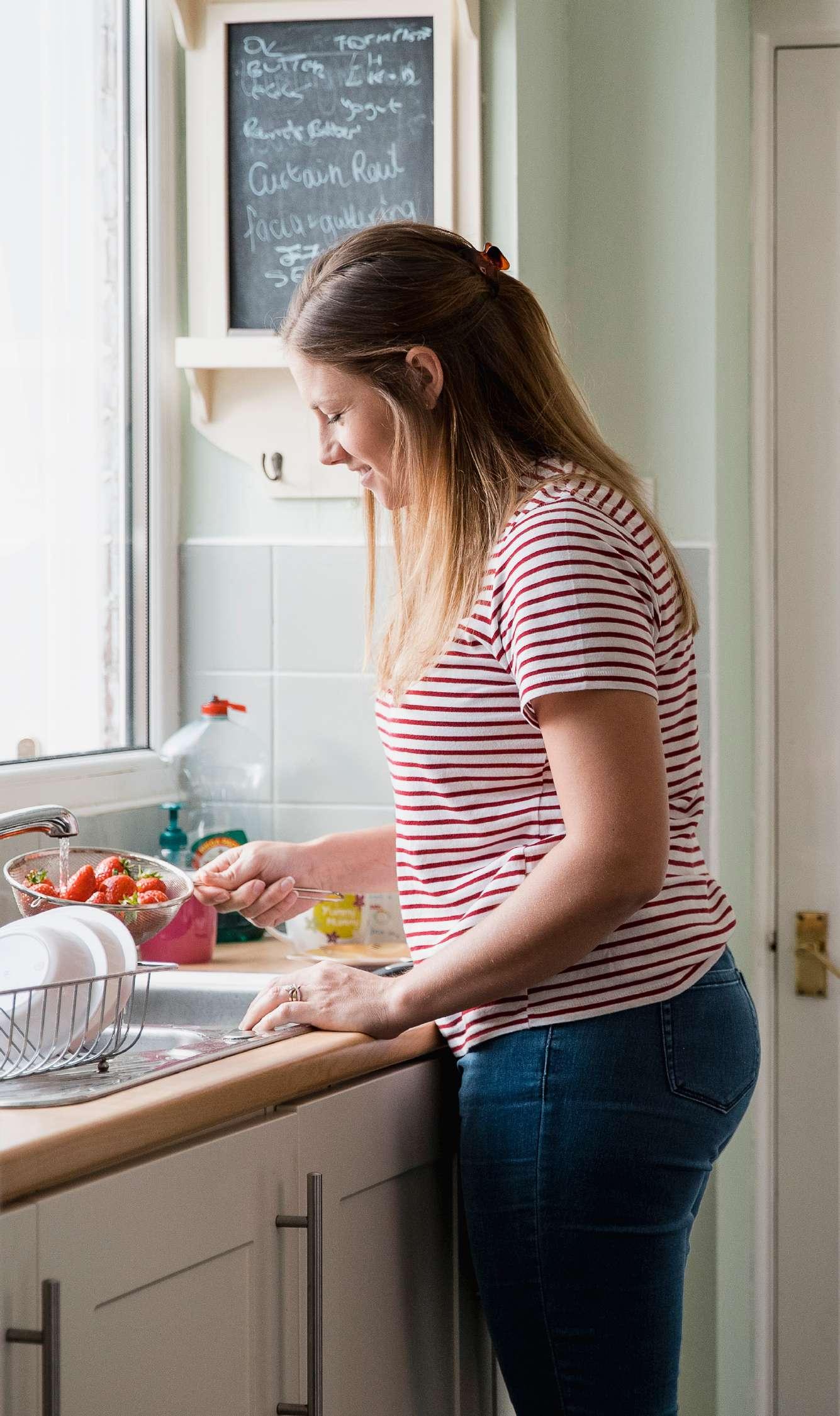
Our regulatory ratings of G1 and V1 highlight our position as an organisation with continued robust governance and financial management. As a result of our track record, we’ve been able to attract £416m of new investment, including the first green loan in the housing sector, enabling us to continue building the new homes our region desperately needs.
I’m pleased we’ve been able to build another 1,390 new homes, making a continued contribution to affordable housing in the region. And we obtained planning permission for the redevelopment of the Victory Quay site in Portsmouth. This will transform a large brownfield site at the city’s entrance with over 800 new homes, green spaces and community facilities.
In a testing period we’ve shown resilience and commitment. We’re highly focused on our priorities and ambitions. I’d like to thank our customers for their feedback and continuing support, as well as our business partners and our people.
Mark Perry
We’re a leading housing association in the south of England with 34,000 homes and 74,000 customers across Hampshire, Surrey, Berkshire and West Sussex.
Everyone has the right to a safe and secure place to call home and with a VIVID home our customers also have access to a wide range of tailored support to sustain their tenancies and look after their wellbeing.
We invest in communities and address the shortage of affordable housing in the south, building the right type of homes to meet society’s needs. We’re the sixth largest developer of new homes amongst housing associations in England, having built over 1,390 last year.
We operate in over 20 local authority areas across 4 neighbouring counties – Hampshire, Berkshire, Surrey and West Sussex. We take the time to know our area in depth, so that we can build the homes and deliver the actual support our customers and communities needed. Our ability to continually help our customers benefits from the strong relationships built with strategic partners, such as local authorities and contractors.
Housing properties within a social housing business are valued using specific valuation techniques commonly referred to as ‘value in use’. These values are used by financial institutions to lend money to social housing providers. Our housing properties are independently valued by JLL as at 31 March 2023. The value in use shown in the table exceeds the net book value of our completed housing properties by £748m. Together with our reserves of £786m, they increase our net worth to £1.5bn. The open market value is also shown for comparative purposes which in the case of shared ownership homes, only the retained equity that VIVID owns has been valued.
We’ve continued the steady growth in our asset base which has allowed us to maintain our financial strength during a challenging year. And our financial strength means we can invest more in our services to meet customers’ expectations.
We’re a major affordable housing provider, with ambitions to grow and lead the industry in providing quality and sustainable homes and services. We strive to be even better than we are today, to be easier to deal with and to continue supporting customers when they need extra help.
Our scale and strength give us capacity to do this, attract partnerships and create opportunities to enable cohesive communities as well as develop more new homes.
Our vision is ‘More homes, bright futures’ and we’re challenging ourselves to set the standard for affordable housing in the UK.
Our 3 ambitions are centred on building trust, pride, and impact for the benefit of our customers.

Being able to say you are proud of your home is everything. Saying it about your VIVID home is even better. Ensuring our customers are satisfied with the service and treatment they receive from us, continues to be our focus and priority.
In the last year we have provided 2,837 more customers with a place to call home

Customer satisfaction with repairs was 8.7/10. And we want to be better.
As well as transforming the way we work, we have 3 clear focuses to drive improvement in customer service:
• Improving the speed and quality in which repairs are completed in customers’ homes.
• Making is easy to contact us.
• Being better at keeping customers informed.
We measure our performance against our service standards through transactional surveys sent to customers following any interaction with us, whether it be a repair or contact with our customer experience team.
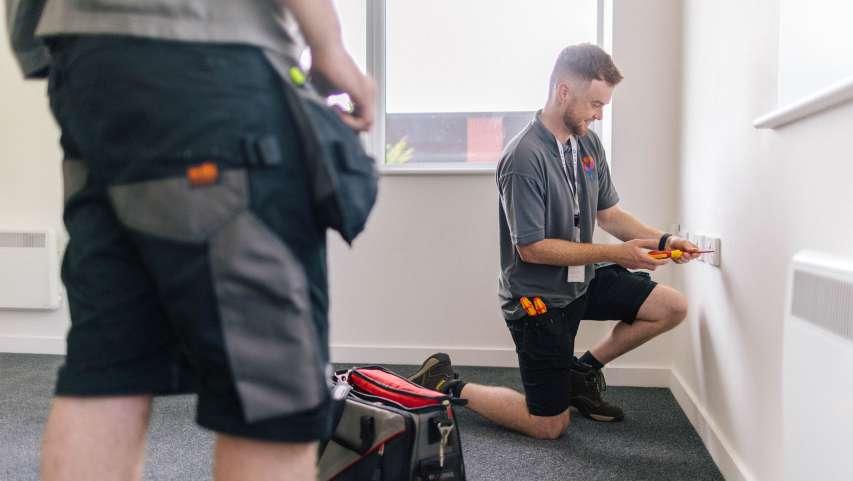
Every 6 months we work with TLF Research who ask our customers to rate their overall experience with us, the quality of our service, and share ways we can improve. We use this feedback to help us make improvements to our service.
We’re open and honest about our performance against these measures so our customers can hold us to account. Our progress is scrutinised by our Customer Service Committee, made up of customers, staff and Board members, and a review of our performance is published on our website every 3 months.

Our customers’ views matter to us, as together we can improve the way we design and deliver good quality homes and services. They have the opportunity to get involved, have a voice, shape and influence what we do.
There are a variety of ways a customer can get involved, based around interests, preferences and the time available to give.
We have a diverse group of over 1,250 involved customers across our operating area who work with us in a range of ways, from our Customer Services Committee, VIVID Plus Board, Neighbourhood Volunteers to setting up Resident Groups, our scrutiny panel VIVID Impact and more.
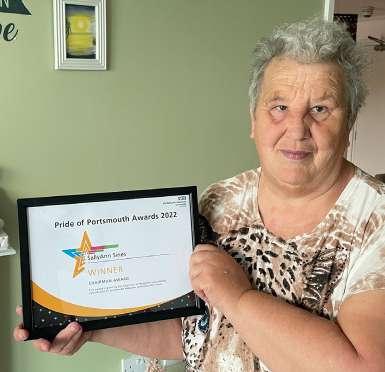
We strive to continuously improve our services and we always want to hear where customers think we need to make improvements.
Recently, we’ve improved our services based on customer feedback – from making repairs responsibilities clearer to creating a new team to keep them better informed when a contractor is completing a repair.
VIVID Impact fed back that it needs to be clearer which repairs customers are responsible for and which repairs VIVID undertakes, and since then a full list has been published on our website. They also said that customers are waiting too long for repairs, and are pleased that there is a focus on this to improve the speed of completing routine repairs.
Following additonal input from VIVID Impact, we are going to keep customers more informed on the range of ways we can communicate and access information about our services through the website including features to help if you’re visually impaired, have dyslexia or are hard of hearing. Customers want to know alternative ways of communicating other than phone and email.
More details about our customer involvement can be found on our website here.
“In my role as chair of VIVID’s tenant scrutiny panel, VIVID Impact and as a neighbourhood volunteer for my block in Portsmouth I have always found VIVID staff to be polite friendly and professional and the management to be open, transparent, and eager to implement recommendations for service improvements.”
Sally Sines, Chair of VIVID Impact
Everyone wants and expects great customer service, and when things go wrong, they expect us to put things right quickly. We’ve continued to comply with The Housing Ombudsman Service (HOS) complaint handling code, published in July 2020.
Our Customer Services Committee regularly reviews how we’re doing, and we publish our performance on our website here.
The Housing Sector has seen a significant increase in complaints over the last 12 months, we received a total of 1,455 formal complaints (stage 1 and stage 2) and 824 compliments. We also received 19,270 10/10 positive comment scores.
Our Customer Success team’s purpose is to constantly evaluate our complaints process, empower managers and ultimately ensure that the customer receives the outcome needed. The team was set up to mitigate dissatisfaction as quickly as possible before it escalates.
• Implemented a companywide complaint objective to ensure all contribute to putting things right for our customers.
• We’ve transferred the management of our sheltered schemes to our independent living team following positive comments from our customers.
• Our electrical team are using text notifications to quickly notify customers when there are any issues such as lift breakdowns.
• Launched an App for our trades colleagues to order stock needed to complete repairs at the first visit.
• Updated our pre-tenancy assessment to ensure applicants are able to share information that enables us to identify housing suitable for their individual needs.
We continue to review and strive to make improvements.
• Ensured customers experiencing high levels of antisocial behaviour are provided with a single point of contact suitable to their needs.
• Updated our “Repairs Responsibilities” matrix so our customers know what they can expect from us and what their responsibilities are.
• Reviewed our management move process to ensure where homes are no longer suitable, we are flexible in our approach to rehousing.

We’ve continued to make improvements to our homes, communal areas and neighbourhoods to make them great places to live.
VIVID Plus has now celebrated its second anniversary. Our charitable arm was setup to help our customers and communities in which we operate to thrive. The reason for being and core themes remain - to provide customers with tailored, individual tenancy sustainment support, and tackle community-led priorities to ensure people feel proud of where they live.
The profit we make from homes we build for sale are transferred to VIVID Plus. We’ve built up a fund of £16m, enabling us to commit to long-term support for communities and place-shaping projects.
Our achievements over the last year include:
2,266 customers supported within our tenancy support team
£310k of our welfare fund allocated to customers in need
£5.8m extra income secured for our customers
448 customers supported through employment and training team
194 customers helped with a device or access to the internet
32 partners and community projects supported
VIVID Plus committed a further £250,000 investment over the last year to support customer and communities through the impact of the cost of living crisis. This support has impacted over 2,000 customers, helping them to continue to stay safe and maintain their home.
From the moment our customers move into their home, we provide help if needed, so they stay on track. Whether it’s money and benefits advice, mental health support or even need some pointers on how to use your computer, we have some great people to talk to. And if they can’t help, we can refer them to someone who can.
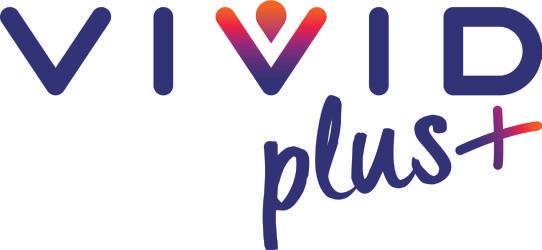
We supported our customer, Claire, who has cerebral palsy and was about to lose her job at a supermarket after 20 years’ service.
We helped her update her CV which reflected her excellent customer service and communication skills. She is now working at an estate agent in the lettings department.
We are so proud of her achievement as she doesn’t let her disability prevent her from working.
The partnership with Park Community School and VIVID Plus is another example of our shared dedication to sustainable local social enterprise projects addressing food poverty and wider issues of inequality.

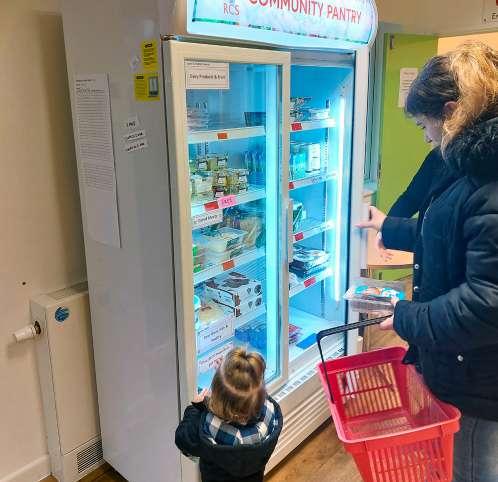
Now in our second year we have been able to expand our partnerships and reach even further.
More details about VIVID Plus can be found on our website here.
“I have been using the pantry since my youngest was born, he is now 2 years old, but often finding the money each session has been hard when bills have increased so much. VIVID providing the 4 free sessions has really helped. Thank you, I need all the help I can get.”
Gemma, a VIVID customer who was referred to Eastleigh food pantry
“With the support of VIVID and continuing the work of the Munch Community Food Pantry we are hoping to help local families and inspire them to cook healthier meals for all.”
Christopher Anders, Headteacher of Park Community School
By engaging with our customers and the community to understand what they really need, we make sure our homes and neighbourhoods are where people are proud to live.
It’s important that we complete repairs quickly and minimise disruption.

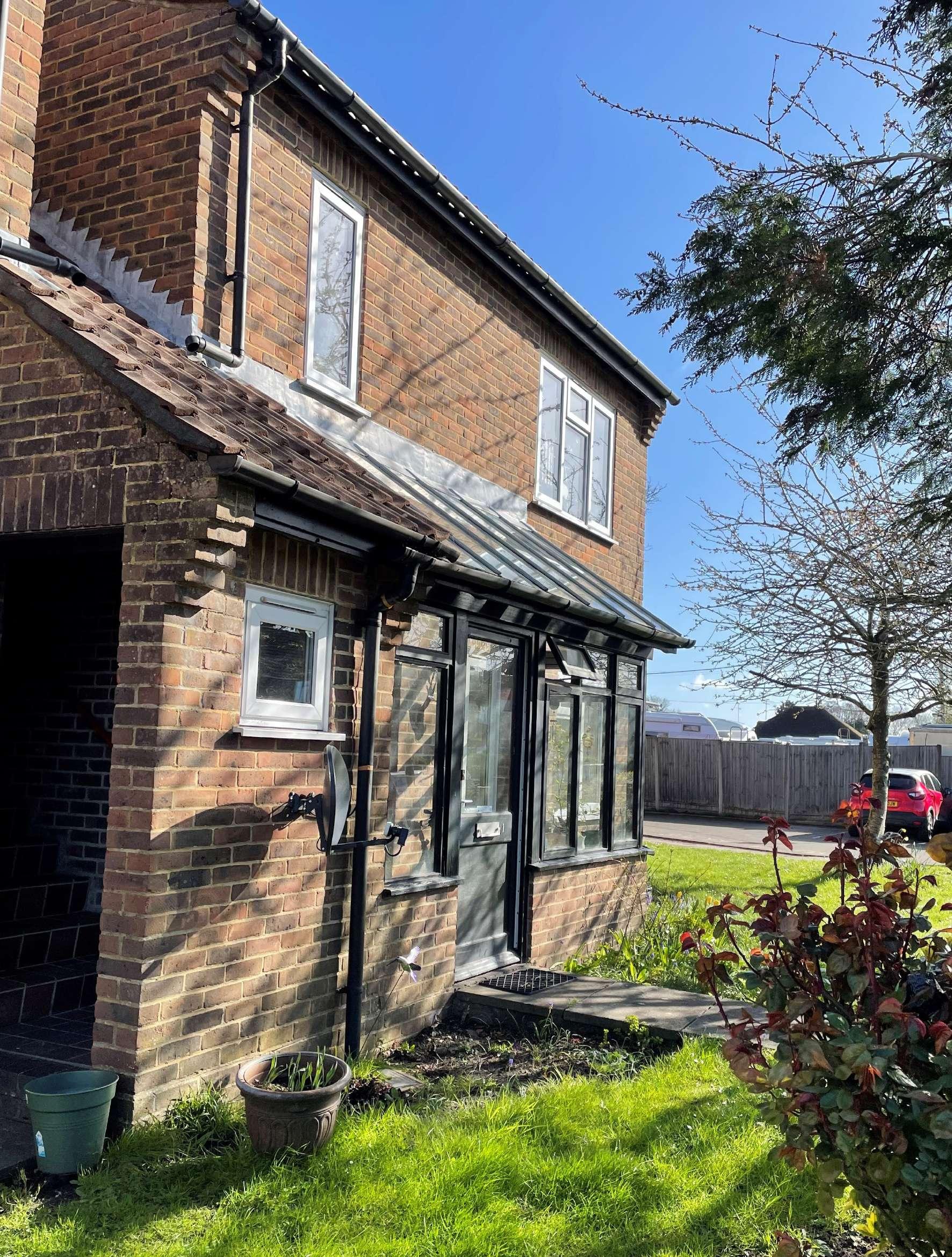
We need to make sure our homes meet the needs of both our current and future customers and remain affordable to live in. Environmental pressures and climate change are among the biggest changes we need to adapt to.
Our homes are where we can make the biggest difference – to the cost of living for our customers and our impact on the environment. We’ve estimated that our customers spend around £9.2m on energy each year, and our homes are responsible for around 170,000 tonnes of CO2 emissions.
We’re committed to delivering energy efficiency improvements to all of our homes that don’t currently achieve Energy Performance Certificate (EPC) C by 2030. We want to make it easier for our customers to manage energy costs and keep warm in winter. Once obtained, an EPC is valid for 10 years. In 2022/23 we built 1,338 homes achieving EPC B or above.
Making our homes more energy efficient has many benefits for our customers and for the environment. We know that rising energy and fuel costs are having a huge impact on many of our customers which makes this work even more important.
Some of the planned works include installing external wall insulation to our homes to reduce the amount of heat lost from them. This will help our customers to manage their energy costs and will reduce carbon emissions, making them more affordable to live in by reducing the amount of energy they consume.

Damp and mould within housing has made headlines over the last year – for all the wrong reasons. We anticipated that the cost of living crisis would result in more cases as people avoid using their heating. We created a specialist damp and mould team in January 2022. Our specialists manage all reports of damp and mould, visit the affected homes, keep customers updated and oversee repairs. During the year we supported over 2,000 customers who reported damp or mould, carrying out 1,500 repairs and giving advice on heating and ventilation.
We’re investing £10m to improve the energy efficiency of 400 homes in Farnborough. These are the sort of homes that would normally be considered hard to address but we have the resources to improve them. This will be the first of a new wave of similar projects to improve homes over the next 7 years.

In addition, we have been awarded funding of £4.6m from the Social Housing Decarbonisation Fund. This will help to increase the pace and scale of our energy efficiency programme.
Over the year we found one severe case of damp and mould in a home that was overcrowded. The family affected were immediately moved to a more suitable home.

We’ve also used our home and customer insight data to identify patterns and highlight where customers might be at risk of experiencing damp or mould. This highlighted several risk indicators (e.g. less energy efficient homes, single occupants over 60, higher levels of occupation especially where there are children). We’ve proactively contacted these customers and followed up any reports of damp and mould.
Continuing with our theme for providing energy efficient homes, our joint venture with BoKlok UK, the sustainable, quality low-cost home provider, jointly owned by Skanska and IKEA, continues to go from strength to strength.
This relationship allows us to utilise modern methods of construction with modular homes.
Ambition 3:
Our strong development programme has continued to deliver more homes at pace to address the shortage of homes in our region. Our programme focuses on building new homes for a variety of tenures and types to suit our communities’ differing needs and circumstances.
We were positioned as sixth in Inside Housing’s Top 50 Biggest Builders survey 2023. The UK’s housing market remains fundamentally out of kilter with earnings – both in terms of renting and owning. This year we delivered 1,390 new homes with 90% of them being affordable.
We’re determined to give as many people as possible the greatest chance of having a place to call home. We plan to do that by using the strength of our finances and our development expertise.
Our £291m total grant allocation enables us to do more, build more and provide more homes. We are immensely proud to have been able to deliver 267 homes as social rent, honouring our promise.
Working in partnership enables us to deliver our plans. Our subsidiary Bargate Homes built and sold 123 homes making a profit for the group of £4.2m. Bargate’s land-buying capability has benefited the whole group, so we now control enough land to build over 10,455 homes in the coming years. They share our vision for creating homes to be proud of in communities that care.
Our joint venture with BoKlok increases our drive to net-zero carbon and with an approach to build more homes across a range of tenures, using the latest approach in modular construction.
This is an attractive development surrounded by mature woodland near to our North Stoneham Park development in Eastleigh.

The scheme of 55 new homes will provide a mix of tenures - affordable rented, social rented and shared ownership homes using Homes England SP1 funding plus market homes. These are being constructed by Highwood Homes. Set amongst the beautiful grounds this will be a stunning community to be part of.
Our Bishops Meadow development on the edge of Bishops Waltham in the centre of Hampshire, is the largest development undertaken by our development company Bargate Homes. It provides 110 new homes including 50 affordable homes for rent and shared ownership.
This was a challenging site requiring a lot of landscaping to create a large green space in the middle of the development, featuring a play area, pond and community vegetable garden.
We’ve created a new village community set in a stunning meadow, with each home having signature details that reflect the historic location, a development we are really proud of. Developments like these helped Bargate Homes scoop two prestigious Premier Guarantee awards – including Developer of the year 2023.

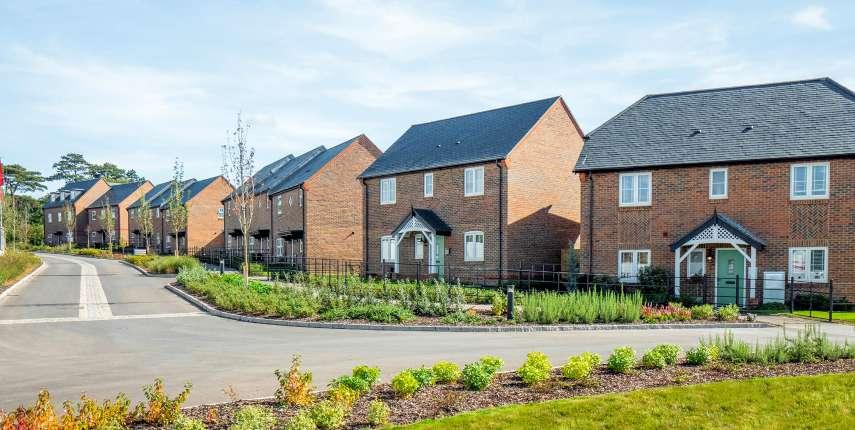
1,390 new homes built
88% homes built for social and affordable rent and shared ownership
50% of programme delivered through joint ventures or land-led
£356m spent on building new homes
£416m in funding raised to support development and decarbonisation
Over £291m grant through Homes England Strategic Partnership

£135.8m of sales receipts to be reinvested
46.3 days average re-let time
Our values – work as one team, encourage challenge and change, and deliver a great customer experience link everyone together. Whether it’s your home or your work we all want to feel we are in a welcoming, inclusive and vibrant environment to thrive. Being able to make a choice is empowering, knowing this is encouraged.
Without question everyone at VIVID makes it the company it is and are the sheer force behind its success. There is a common thread when you ask anyone, why do you work for VIVID - the answer is a resounding because we want to make a difference.


This passion is evident across the whole business whether supporting existing customers to have a safe home, selling a new build and handing over the keys, guiding customers to get the advice or help needed and more.
Learn more about the choices available and life at VIVID here.
Every company no matter what the size, wants to be a place where its staff are highly engaged and believe in the ethos and values of the business.
We recognise to be a truly successful organisation we must have a diverse workforce that reflects the demographics of our region. And to help achieve this our overall approach has been to focus on ‘inclusion’ as the best way of continually making progress. Our employee Diversity & Inclusion group shapes our approach so we can all be ourselves and succeed.

We believe in working as one team and encouraging challenge and change to create a vibrant culture that supports, develops, and attracts the best people. And a fundamental part of this is having a diverse work force. The more diverse our team the more creative and inclusive we are. And the better we can understand our customers and deliver the services they need to thrive. We want to create an inclusive atmosphere that allows us to collaborate, challenge, innovate and improve.
The pay gap is the difference in average earnings between specific groups of workers. Closing pay gaps is an important part of demonstrating our inclusive culture where everyone feels it’s a great place to work and they can give their best knowing they’re being rewarded fairly.
In our most recent pay gap reports, we reported that we’ve closed our gender pay gap from 13.5% five years ago, down to just under 1% and our ethnicity pay gap from 11.8% three years ago, down to 4.7%.
We’re creating a culture where irrespective of your gender, the roles within the business are open to anyone. Generating awareness and interest to encourage and attract more women into our trade roles is something that we continue to strive for. Our most recent apprentices within trades are women, showing that what is important is doing the job you enjoy for a company you respect, and that respects you.
More details about ‘VIVID -an inclusive culture’ can be found on our website here.
We’ve been certified by Best Companies and recognised for our commitment to our employees, with a ‘very good’ 1-star accreditation rating. This has resulted in the organisation being placed 14th in the ‘top 25 housing associations to work for’ in the UK list, alongside inclusion within the ‘South East’s 75 best companies to work for’ list 2022.


It’s about creating the right culture and a really good place to work.
Growing
“A career in carpentry can be really creative as you learn how to construct so many different things. At college I’m learning all sorts of new technical skills such as how to make stairs, construct stud walls and truss roofs.
up, I’ve always been into construction. I’ve never been that sort of person to sit in an office and work on computers. I always like to be out and about.
The difference between men and women in this role makes no difference to me. We’re all equal which is how it should be. I’d definitely encourage others to pursue a trades role. There’s so much to learn and no day is ever the same.”
Molly McLaughlin-Gray, Apprentice Carpenter
During the year we’ve maintained high levels of liquidity and managed the associated risks.
We also established a £2bn EMTN programme including a sustainable financing framework. This will mean we’re able to raise the funds, through sustainability bonds, to fund our ambitious development programme and decarbonisation programme.
• Funding risk – Our business plan identifies when and how much funding is required to fund our development programme. We spread our sources of financing and ensure we’re not reliant on a single investor or bank.

• Liquidity risk – Our treasury policy includes a golden rule which calculates the level of liquidity we need to maintain a strong business. On 31 March 2023 we had £655m of liquidity.
• Counterparty credit risk – We’ve set minimum credit ratings for each lender, investment counterparty and banker in our treasury policy. We deposit surplus cash with various counterparties. The credit ratings of counterparties, rather than the returns, are the primary consideration when deciding how to invest cash balances. Counterparty credit ratings are provided by our treasury consultants and monitored in house by our treasury team.
• Interest rate risk – Our treasury policy sets parameters for the percentage of fixed, floating and index-linked debt within our loan portfolio. On 31 March 2023, 87% of our drawn debt was at fixed rates to protect us against future interest rate volatility. None were index linked and 13% was exposed to variable interest rates.
• Compliance risk – Through our business planning and budgeting process we monitor the corporate financial covenants within our loan agreements. Our treasury policy requires us to maintain headroom above these covenants and we set a budget to exceed each lender’s requirements. Performance against the budget is monitored monthly.
This year we introduced ‘smart working’ setting our new way of working following the pandemic lockdowns. Staff have greater flexibility in deciding where they work but are encouraged to use our offices for collaborative activities such as team meetings and training.
To us, value for money means providing a standard of service that meets our purpose as efficiently as possible.
We have 3 value for money (VFM) objectives:
• Provide efficient and effective landlord services

• Maximise our contribution to tackling housing need
• Continually improve the return on our assets
The improvements we’ve introduced to our technology has made our hybrid working journey seamless and inclusive. We’ve provided new laptops and mobiles to staff, increased our use of the Microsoft 365 suite, and improved our meeting room technology allowing staff to work in different locations but still feel connected to the business. We’ll continue to transform the way we run our business through our technology transformation project ‘VIVID 2025’, which focuses on driving improvements for our both our people and customers.
We have 20 VFM measures that track our progress with each of these objectives. And we compare our performance with a group of 11 selected peers using the Sector Scorecard. We have reported 5 year trend data and a summary for each VFM objective of our performance in the year.
With the increasingly uncertain economic outlook, rising inflation and the impact this has on the costs our customers have, our focus continues to be on supporting our customers in these extremely challenging times and applying our resources accordingly.
We measure customer satisfaction through independent perception surveys run by TLF Research twice a year.
We have now switched methodology to align with the new Tenant Satisfaction Measures, so our results are not comparable to previous years. We ran a pilot survey in March 2023 and achieved a score of 66% for overall satisfaction.

Over the year we’ve maintained levels of customer satisfaction across the majority of our touchpoints. This is positive considering the challenges we continued to face with the increased demand in repairs and rising customer expectations. In the coming year we’ve set ourselves a target of 70% to further improve our overall satisfaction. We are focusing on improving areas that are most important to our customers to make their overall experience better. These areas are: speed of repairs, ease of contact and keeping customers informed.
Here are our transactional scores:
With 1,390 new homes this year we’ve delivered nearly 7,000 new homes since we were formed in 2017. This commitment includes the aspiration to build 25% of new homes at social rent and 35% at affordable rent.
For our size, we’re one of the biggest developers in the country and we’re committed to maximising the number of new affordable homes we build each year. We achieve this by generating a healthy surplus and using it to subsidise our development costs.
We manage the mix of our programme to generate a profit from sales which subsidises our affordable rented housing, taking care not to over-expose ourselves to the housing market.

We’ve locked in low interest rates by fixing the rates on 87% of our debt for an average term of 12 years, enabling us to put more resources into development without worrying about rising interest rates.
We’re clear that building homes for social rent is a vital part of meeting housing needs, making maximum use of our surplus to make our new homes as affordable as possible. We’ve also committed to all 3 and 4 bedroom homes being let at social rent, keeping them more affordable.
We have continued to perform well on rent collection and maintained our level of arrears. In these areas we compare well against our peers. Although better than last year we need to improve the time it takes to re-let homes and this will reduce our rent loss and improve our operating margin.


Looking forward, our VFM Strategy sets a Matched Funding target to secure £1m of external grant funding towards community investment activities.
We’ve continued to increase the value of our business by achieving a return on assets that exceeds our effective interest rate.
We calculate the return on our assets by comparing our operating surplus with the historic cost of our assets. And we compare this with the average interest rate on our debts.

VIVID Housing Ltd is a registered Cooperative and Community Benefit Society (registration number 7544) and is regulated by the Regulator of Social Housing (registration number 4850). The group
The Board sets the strategic direction of VIVID and its subsidiaries. They make sure we’re always one step ahead by looking to the future. It means we’re well set up to achieve our ambitions and keep delivering what our customers need. They keep a close eye on the services we provide, monitoring our performance and how well we’re managing our finances.
Charles Alexander - Group Board Chair
Sandeep Agarwal - Chair of Treasury Committee (from 21 July 2022)
Liam Coleman - Chair of Customer Service Committee (from 21 July 2022)
Naleena Gururani - Chair of Remuneration and Nominations committee (from 22 July 2022)
Anne-Marie Mountifield - Chair of VIVID Plus (from 22 July 2022)
Lynda Shillaw - Senior Independent Director
Jean-Marc Vandevivere
Shena Winning - Chair of Audit and Risk Committee
Mark Perry - Chief Executive
Duncan Brown - Chief Finance Officer
Mike Shepherd – (until 31 December 2022)
Jonathan Cowie - Chief Operating Officer
Jane Earl - Chair of RNC and VIVID Plus (until 21 July 2022)
Philip Raw - Chair of Customer Service Committee (until 21 July 2022)
We’re open and transparent about how much we pay our board members. We review our Board remuneration regularly and use independent advice and benchmarking at least every three years). Remuneration of the non-executive Board members and the executive directors is detailed on page 72.
The Board of Bargate Homes Ltd is appointed by the VIVID Board. It’s chaired by Mark Perry who was appointed as a Director on 1 January 2023. He sits alongside fellow Board members Duncan Brown, Mark White and Steve Birch (who was appointed as a Director on 23 June 2022). Jeremy Trezise former Director of Finance, stepped down from the Board on 13 May 2022, and Mike Shepherd, former Chair, stepped down on 31 December 2022.
The Board of Vestal Developments Ltd is appointed by the VIVID Group Board. It’s chaired by Duncan Brown, who sits alongside David Ball who was appointed as a Director on 1 January 2023. Mike Shepherd stepped down from the Board on 31 December 2022.
The Board of VIVID Build Ltd is appointed by the VIVID Group Board. It’s chaired by Duncan Brown who sits alongside David Ball who was appointed as a Director on 1 January 2023. Mike Shepherd stepped down from the Board on 31 December 2022.
The board of VIVID Plus is appointed by the VIVID Group Board. It was chaired by Jane Earl until 21 July 2022. Anne-Marie Mountifield then took over as Chair from 22 July 2022. She sits alongside Duncan Brown, Jonathan Cowie, and our customer members, Giuseppe Severgnini and Jacqueline Westbrook.
The Board of Peninsular Capital plc is appointed by the VIVID Group Board. It’s chaired by Duncan Brown, who sits alongside David Ball, Mark Perry and Jonathan Roberts, all of whom were appointed on 23 September 2022.
Chair: Liam Coleman
The Customer Service Committee (CSC) ensures customers are involved in decisions that affect them and that their views are considered when decisions are made.
We ensure there are service standards which are consistently delivered and that we handle complaints, effectively and fairly and implement the lessons we learn. The committee met 4 times during the year. The Chair was Philip Raw until 21 July 2022, at which point Liam Coleman took on the role. During the year we have looked in-depth at complaints received and how we respond and learn from them.
We looked at how we could make what we do more transparent and understandable to customers, including the performance data we routinely share, and how our transformation programme P25 will change how customers communicate with us. We undertook a series of deep dives on building and fire safety, damp and mould and how we tackle anti-social behaviour.
Chair: Nalenna Gururani

The Remuneration & Nominations Committee oversees our approach to people, culture and reward and the appointment and performance of our non-executive directors and the Chief Executive.
During the year, the committee met 5 times. The committee was chaired by Jane Earl until 21 July 2022 at which point Naleena Gururani took on the role.
During the year we reviewed our compliance with the Code of Governance and commissioned an external review of the effectiveness of our governance. We recommended board and committee appointments, which were made following the AGM in July. We have taken the decision to review much of our work in the context of the culture that the organisation is developing. We reviewed our People Policy, Gender Pay Gap report, Code of Conduct and Standing Orders.
A panel made up of members of the Committee interviewed and made a recommendation to the Board in July for the appointment of a new Non-Executive Director, following an open recruitment process.


We also supported the Chief Executive in consideration of bonus payments and pay awards for staff.
Chair: Mark Perry
The Project Approvals Committee is responsible for approving expenditure on major projects which support our Development Strategy and Corporate Plan.
It monitors the award of contracts and our planned improvement programmes to ensure that approved projects deliver the expected benefits and that the risks connected with these projects are managed.
This includes the development of new schemes, the remodelling, rehabilitation, regeneration and disposal of the Group’s stock or projects within the asset management strategy. During the year, the committee met 11 times. It is chaired by Mark Perry.
We’ve had another productive year overseeing development projects that enabled us to deliver 1390 homes for our customers. We’ve continued to review schemes upon their completion through our end of scheme reviews, which help us improve and transfer insight into new and ongoing projects. We’ve been working with Homes England on the delivery of our Strategic Partnership 1 contract and monitor this through the committee.
The Victory Quay (formerly known as Tipner East) development had planning permission granted for 835 homes in Portsmouth, which will be a huge boost to housing for the city.
The Treasury Committee is responsible for overseeing our Treasury Strategy and provides assurance to the Board on new funding decisions. During the year we met 9 times. It was chaired by Shena Winning until 21 July 2022. Sandeep Agarwal took the chair from 21 July 2022.


The year started with us setting a Treasury Strategy for 2022/23. We have focused on establishing our £2bn EMTN programme to give us agility to take advantage of positive market movements as we fund our long-term business plan. We’ve also strengthened our liquidity position in the face of economic headwinds. In total we approved £695m in new or extended facilities.
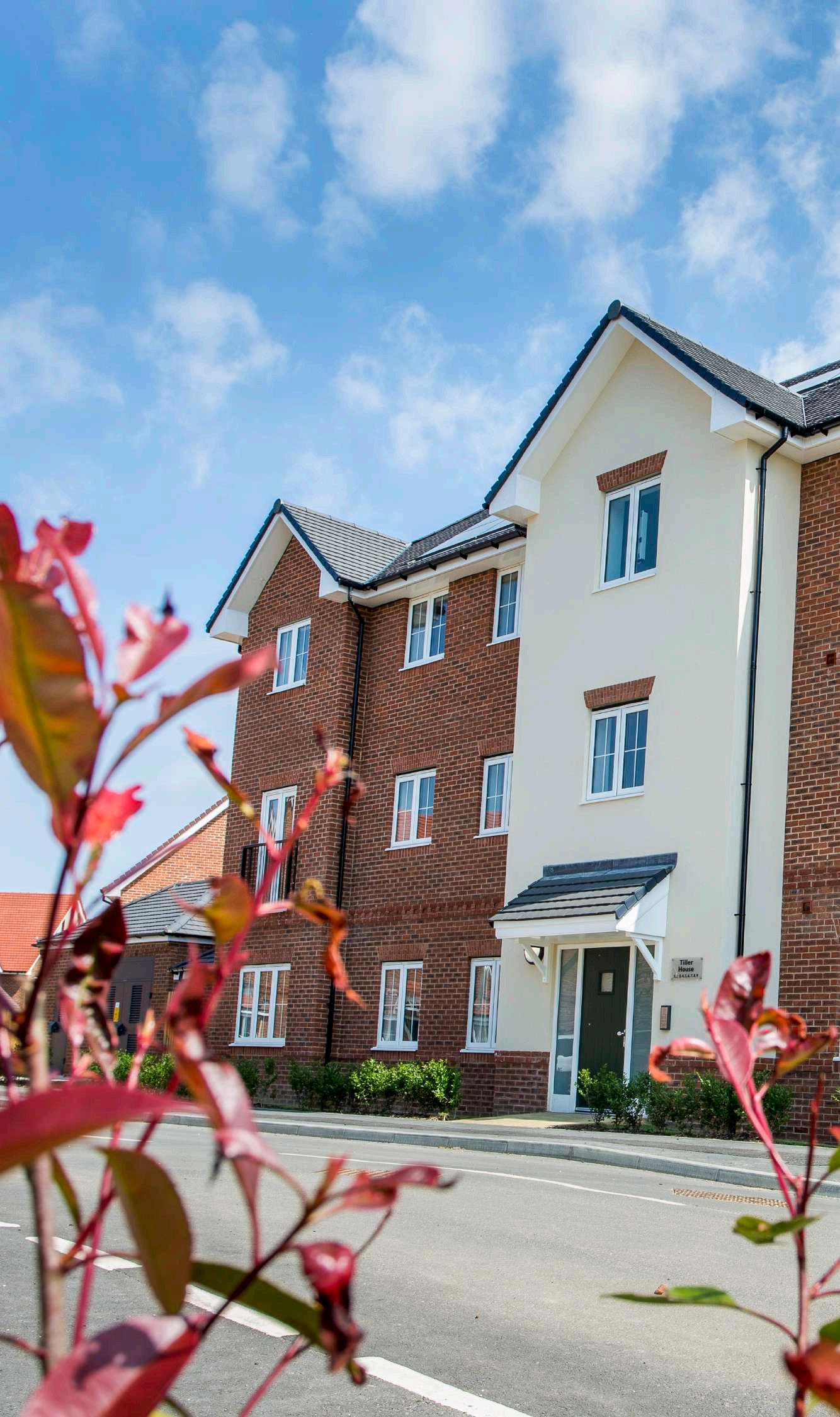
This year we have set out VIVID’s strong ESG (Environmental, Social and Governance) story to stakeholders publishing our inaugural ESG report, a sustainable financing framework and approving the HA sector’s first Green Loan with Barclays. We have also strengthened our unencumbered asset position by switching liquidity facilities to unsecured. Our unencumbered assets are now more than £1bn.
The year ended with recommending to the Board a refreshed treasury management policy and the investment policy.
The Audit and Risk Committee is responsible for overseeing our risk management process and receiving assurance on the system of internal control.
It also provides audit and assurance services to Vestal Developments Limited and VIVID Build Limited under the terms of the Intra-Group Agreements. The committee is chaired by Shena Winning.
During the year, the committee met 5 times and we undertook a full programme of work including:
• Monitoring and agreeing the 3-year Assurance Plan every quarter, based on the Strategic Risk Register
• Appointing our new Internal Auditors, KPMG
• Reviewing the outcomes of quarterly operational controls audits and specialist deep dive audits
• Reviewing our accounting judgements and policies
• Considering our legal compliance based on a report received every six months from a third party
• Agreeing our external audit strategy and planning memorandum
• Discussing a number of strategic issues including the increasing incidence of cyber-attacks in the sector, the volatile external environment, the changing regulatory framework and committee self-assessment. We also received a briefing on our dedicated approach to damp and mould.
Chief Executive
Mark Perry Chief Executive Officer
Executive Officers
Duncan Brown Chief Finance Officer
Jonathan Cowie Chief Operating Officer
Mike Shepherd Group Development & New Business Director (until Dec 2022)
Duncan Short Group Resources Director
Tom Robinson Group Director of Assets & Sustainability
Tristan Samuels Group Development & New Business Director
Company Secretary
Duncan Brown Chief Finance Officer
Registered Office
Peninsular House, Wharf Road, Portsmouth, Hampshire, PO2 8HB
Bankers
Royal Bank of Scotland 3 Hampshire Corporate Park, Templars Way, Chandlers Ford, Hampshire, SO53 3RY
Barclays Bank 8 Market Place, Basingstoke, Hampshire, RG21 7QA
External Auditors
BDO LLP 2 City Place, Beehive Ring Road, Gatwick, West Sussex, RH6 0PA
Internal Auditors
KPMG Gateway House, Tollgate, Chandlers Ford, Eastleigh, SO53 3TG
Ashfords LLP Ashford House, Grenadier Road, Exeter, Devon, EX1 3LH
Bevan Brittan LLP Kings Orchard, 1 Queen Street, Bristol, BS2 0HQ
Capsticks LLP Staple House, Staple Gardens, Winchester, Hampshire, SO23 8SR
Devonshires Solicitors LLP 30 Finsbury Circus, London, EC2M 7DT
Foot Anstey LLP Salt Quay House, 4 North East Quay, Sutton Harbour, Plymouth, Devon, PL4 0BN
Marshalls Solicitors LLP 102 High Street, Godalming, Surrey, GU7 1DS
Moore Barlow LLP Gateway House, Tollgate, Chandler’s Ford, Eastleigh, Hampshire, SO53 3TG
TLT LLP One Redcliffe Street, Bristol, BS1 67P
Penningtons Manches Cooper LLP 125 Wood Street, London, EC2V 7AW
Sharratts (London) LLP 1 The Old Yard, Rectory Lane, Brasted Westerham, Kent, TN16 1JP
TLT LLP One Redcliffe Street, Bristol, BS1 6TP
Trowers & Hamlins LLP 3 Bunhill Row, London, EC1 8YZ
Winckworth Sherwood Minerva House, 5 Montague Close, London, SE1 9BB
Treasury Advisors
Chatham Financial Europe Ltd 12 St James’s Square, London, SW1Y 4LB
More details on our Board and Executive team members can be found here.
The Board is committed to maintaining the highest standards of governance, which we’re able to demonstrate through the adoption of the National Housing Federation’s 2020 Code of Governance.
We conduct a thorough self-assessment each year, overseen by the Audit and Risk committee and the Board and can confirm we complied with all aspects of the Code.

The Board confirms that we’ve met the economic and consumer standards as set out in the Regulator of Social Housing’s Regulatory framework for registered providers of social housing. The Board has carried out an assessment, made enquiries and gained appropriate assurance that we comply with all regulatory standards.
We were rated G1/V1 at our last IDA by the Regulator of Social Housing in July 2021 and this was reconfirmed at our stability check in November 2022.
The Board is responsible for our system of internal control and for reviewing its effectiveness. Our system of internal control is designed to manage rather than eliminate the risk of failure to achieve our corporate ambitions. It provides reasonable, but not absolute, assurance over the safeguarding of assets, the maintenance of proper accounting records and the reliability of financial information. Our system of internal control includes:
• Our Rules provide a governance framework
• Our Standing Orders and Financial Regulations provide clearly defined roles, responsibilities, management and reporting structures, including a system of delegation
• Our Intra-group Agreements set out agreed terms, roles and responsibilities between VIVID and our subsidiaries.
• Our Treasury Management policy sets out our Golden Rules, ensuring we can provide financial resources necessary to achieve our business plan objectives and manage the risks inherent in our treasury activity
Our Investment policy sets out clear parameters for us to invest our funds to either produce a financial return or further our charitable aims
Our Prevention of Financial crime policy covers the prevention, detection, management and reporting of financial crimes and our Speak Up (whistleblowing) and Complaints policies encourage expressing concerns over wrongdoing
• Our Risk Management policy sets out our risk management framework, providing a comprehensive process for assessing and managing strategic and operational risks.
• Our Strategic Risk Register is owned by the Board and records risks which could impact on our strategic objectives. It’s reviewed by the Executive team, the Audit and Risk Committee (ARC) at every meeting as part of the Assurance Plan (detailed below) and by the Board twice a year. It drives our specialist audit assurance work.
• Our Operational Risk Register is owned by the Executive and records risks which impact our operational efficiency. It’s reviewed by Heads of Service (and other operational risk owners) quarterly and drives our operational controls internal audits.
• Strategic risks - our Assurance Plan, which is informed by our strategic risk register, is approved by the ARC and sets out the forward programme of specialist audits. The plan is reviewed at every ARC meeting to ensure it remains relevant to the current risk environment.
• Operational risks - Heads of Service (and other operational risk owners) complete quarterly selfcertification confirming that their controls for operational risks are operating effectively or that action is being taken where they are not. Our internal audit service, provided by KPMG, assesses compliance with our operational controls each quarter.
• The outcomes of strategic and operational audits are reported to ARC and managed through our Control Improvement Plan (CIP) which tracks actions taken to strengthen our risk management and internal controls. The Executive team maintain oversight of the CIP and it is reviewed at every ARC meeting.
• Our business plan is stress tested using several scenarios linked to our strategic risk register. We use these to understand what would “break the plan.” We also use combinations of these tests to simulate extreme economic/financial shocks and understand their impact on the business plan. In response to the more extreme stress tests, we’ve developed recovery plans which will enable us to respond to these scenarios without breaking our covenants.
We maintain a fraud register which is reported to the ARC at every meeting. We submit this to the Regulator annually.
• Our compliance against the Code of Governance self-assessment is completed at least annually and reported to the Audit and Risk committee and the Board.
• Our compliance against the Regulatory Standards self-assessment is completed at least annually and reported to the ARC, and the Board.
• Our Legal Compliance assessment and programme of 6 monthly legal monthly updates helps us ensure compliance with regulation.
• Our management accounts and a performance report are reviewed monthly by the Executive, and by the Board.
• A development progress report and customer operations report are reviewed by the Board at every meeting as part of an overview of strategic issues.
To meet our business plan aspirations, we need to take some calculated risks. The Board has considered the level of risk it’s willing to take and able to manage across five categories of risk – financial, health and safety, reputational, service delivery and compliance. Our risk management framework is based around our risk appetite and is designed to highlight any exposures which exceed the level of risk that we’re comfortable with.
Failure to maintain or improve customer experience and satisfaction
• We have a dedicated Customer Success team to help support the business in our complaints handling.
• We complete regular customer satisfaction surveys and transactional rant & rave surveys where areas for improvement are identified and monitored. The low scored responses are investigated. These are reported to relevant owners weekly and the Chief Operating Officer monthly to monitor and agree actions to be taken.
• We have a set of core service standards which set out our level of service. Our achievement of the standard is measured via metrics which we publish quarterly on our website, share quarterly with our Customer Service Committee via a dashboard and share regularly with COO management team.
• We regularly review our compliance against legislation in a report which goes to our Audit and Risk Committee.
• We undertake annual reviews of compliance with the Code of Governance and Regulatory Standards. These are overseen annually by the Executive team, Audit and Risk Committee and Board.
• We maintain enough liquidity to meet all our contractual commitments without relying on sales. This would enable us to convert unsold homes to rented.
• Our treasury management policy requires us to maintain healthy interest cover headroom from just our lettings activities, ensuring we never rely on sales to comply with loan covenants.
• Our exposure to sales is clearly capped in our business plan and our Project Approvals Committee ensures our development programme remains within these parameters.
Failure to maintain the condition of our homes which leads them to fall into disrepair
• Our stock condition programme gathers information to ensure properties are kept to the standards detailed in our asset compliance procedure
• Repairs offer and core service standards set out our level of service regarding repairs activities. Our achievement of the standard is measured via metrics which we publish quarterly on our website, share quarterly with our Customer Service Committee via a dashboard and share regularly with COO management team. We will be reporting metrics from end of July (for Q1)
• We have a dedicated Damp & Mould team who manage disrepair cases through to completion and maintain contact with the customer through out. All reports of D&M generates a case in OH against a property so these can be properly monitored and appropriately actioned
• We have trained D&M Specialists who carry out assessments, inspections and reports
Fire risk in high rise flats due to component materials used in build
• Most material defects have been identified and have been / are being remediated. We continually work to identify any construction defects and remedy these. Intrusive inspections of external wall systems are progressing on a risk based approach, looking at the tallest and highest risk buildings in turn, to ensure that other construction defects are not apparent.
• We continue to engage with other building owners (where we have individual units on a leasehold interest), to encourage and support them in the remediation of their buildings.
Business Interruption incident that seriously disrupts our ability to deliver services as normal or has a major impact on reputation
• Critical incident response plans are in place for the overall business which are tested at least annually. The outcome is reported to the Executive team annually or after a test to monitor and agree any actions required.
• Further critical incident response plans are in place to specifically manage our response to any potential cyber-attack, ensuring that our key services can continue in the event of an incident.
• We have very sophisticated defences against cyber threats which the ARC received a report on in April 2022. This was followed up with a specialist audit of our cyber-security incident response and a resultant action plan has further bolstered our resilience. This remains an area where the business will evolve with the changing threats from the external environment.
During the year, the Board received the following assurance about our system of internal control:
• Chief Executive’s annual report on internal control
• Audit and Risk Committee’s annual report on its work and opinion on internal control
• Internal auditor’s annual report on its work
• Self-assessment confirming our compliance with the Code of Governance
• Self-assessment confirming our compliance with the Regulatory Standards
The Board confirms that there are currently no significant control weaknesses, and that our established and sound system of internal controls has operated satisfactorily throughout the year.
Directors and Officers Liability insurance cover has been arranged for all Directors and Officers to provide indemnity for the cost of claims of alleged mismanagement of the organisation. Our Rules indemnify each of the Directors of the Company and/or its subsidiaries and the Directors and Officers liability insurance provides reimbursement to the organisation in such circumstances. The indemnity was in force during the 2022/23 financial year and remains in force for all current past Directors of VIVID
The directors who held office at the date of signing this report confirm that, so far as they are each aware, all relevant information has been provided to the auditor and each director has taken all the steps they ought to have taken to be aware of any relevant audit information and provide it to the auditor.

The Board is responsible for preparing the Board’s Report and the financial statements in accordance with applicable law and regulations.
Co-operative and Community Benefit Society law requires the Board to prepare financial statements for each financial year. Under those regulations, the Board has elected to prepare the financial statements in accordance with UK Accounting Standards, including FRS 102 The Financial Reporting Standard applicable in the UK and Republic of Ireland.
The financial statements are required by law to give a true and fair view of the state of affairs of the Group and the Association and of the income and expenditure of the Group and the Association for that period.
In preparing these financial statements, the Board is required to:
• Select suitable accounting policies and then apply them consistently
• Make judgements and estimates that are reasonable and prudent
• State whether applicable UK Accounting Standards and the Statement of Recommended Practice have been followed, subject to any material departures disclosed and explained in the financial statements
• Prepare the financial statements on the going concern basis unless it is inappropriate to presume that the Association will continue in business

The Board is responsible for keeping proper books of account that disclose with reasonable accuracy at any time the financial position of the Association and enable them to ensure that its financial statements comply with the Co-operative and Community Benefit Societies Act 2014, the Housing and Regeneration Act 2008, the Accounting Direction for Private Registered Providers of Social Housing 2019 and the Statement of Recommended Practice (SORP) 2018. The Board has general responsibility for taking such steps as are reasonably open to it to safeguard the assets of the Association and to prevent and detect fraud and other irregularities.
The Board is responsible for the maintenance and integrity of the corporate and financial information included on the Association’s website. Legislation in the UK governing the preparation and dissemination of financial statements may differ from legislation in other jurisdictions.
The Board reviewed the Association’s business plan in March 2023 and was content that these plans were affordable and that the accounts should be prepared on a going concern basis.

Given the strength of the balance sheet and availability and liquidity of undrawn loan facilities, totalling around £655m, the Board believes that, while uncertainty exists, this does not pose a material uncertainty that would cast doubt on the Associations ability to continue as a going concern. The Board, therefore, considers it appropriate for the accounts to be prepared on a going concern basis.
Charles AlexanderOn behalf of the Board
22 June 2023

In our opinion the financial statements:
• give a true and fair view of the state of the group’s and of the Association’s affairs as at 31 March 2023 and of the group’s and the Associations surplus for the year then ended;
• have been properly prepared in accordance with United Kingdom Generally Accepted Accounting Practice; and
• have been properly prepared in accordance with the Co-operative and Community Benefit Societies Act 2014, the Co-operative and Community Benefit Societies (Group Accounts) Regulations 1969, the Housing and Regeneration Act 2008, and the Accounting Direction for Private Registered Providers of Social Housing 2022.
We have audited the financial statements of VIVID Housing Ltd (“the association”‘) and its subsidiaries (the “group”) for the year ended 31 March 2023 which comprise the consolidated and Association statement of comprehensive income, the consolidated and Association statement of changes in reserves, the consolidated and association statement of financial position, the consolidated statement of cash flow, and the related notes to the financial statements, including a summary of significant accounting policies. The financial reporting framework that has been applied in their preparation is applicable law and United Kingdom Accounting Standards including Financial Reporting Standard 102; The Financial Reporting Standard applicable in the UK and Republic of Ireland (United Kingdom Generally Accepted Accounting Practice).
We conducted our audit in accordance with International Standards on Auditing (UK) (“ISAs (UK)”) and applicable law. Our responsibilities under those standards are further described in the Auditor’s responsibilities for the audit of the financial statements section of our report. We are independent of the Group and Association in accordance with the ethical requirements that are relevant to our audit of the financial statements in the UK, including the FRC’s Ethical Standard, and we have fulfilled our other ethical responsibilities in accordance with these requirements. We believe that the audit evidence we have obtained is sufficient and appropriate to provide a basis for our opinion.
We remain independent of the group and association in accordance with the ethical requirements that are relevant to our audit of the financial statements in the UK, including the FRC’s Ethical Standard, and we have fulfilled our other ethical responsibilities in accordance with these requirements.
In auditing the financial statements, we have concluded that the board members’ use of the going concern basis of accounting in the preparation of the financial statements is appropriate.
Based on the work we have performed, we have not identified any material uncertainties relating to events or conditions that, individually or collectively, may cast significant doubt on the Group’s and the Association’s ability to continue as a going concern for a period of at least twelve months from when the financial statements are authorised for issue.
Our responsibilities and the responsibilities of the board with respect to going concern are described in the relevant sections of this report.
The board is responsible for the other information. The other information comprises the information included in the Annual Report, other than the financial statements and our auditor’s report thereon. Our opinion on the financial statements does not cover the other information and we do not express any form of assurance conclusion thereon.
We have nothing to report in respect of the following matters where the Co-operative and Community Benefit Societies Act 2014 or the Housing and Regeneration Act 2008 to report to you if, in our opinion:
Our responsibility is to read the other information including the Strategic Report and the Report of the Board of Management and, in doing so, consider whether the other information is materially inconsistent with the financial statements or our knowledge obtained in the audit or otherwise appears to be materially misstated. If we identify such material inconsistencies or apparent material misstatements, we are required to determine whether there is a material misstatement in the financial statements or a material misstatement of the other information. If, based on the work we have performed, we conclude that there is a material misstatement of this other information, we are required to report that fact.
We have nothing to report in this regard.
• the information given in the Report of the Board of management for the financial year for which the financial statements are prepared is not consistent with the financial statements;
• adequate accounting records have not been kept by the parent Association; or
• a satisfactory system of control has not been maintained over transactions; or
• the parent Association financial statements are not in agreement with the accounting records and returns; or
• we have not received all the information and explanations we require for our audit.
As explained more fully in the Statement of the Responsibilities of the Board, the board is responsible for the preparation of the financial statements and for being satisfied that they give a true and fair view, and for such internal control as the board determines is necessary to enable the preparation of financial statements that are free from material misstatement, whether due to fraud or error.
In preparing the financial statements, the board is responsible for assessing the group’s and Association’s ability to continue as a going concern, disclosing, as applicable, matters related to going concern and using the going concern basis of accounting unless the board either intend to liquidate the group or the Association or to cease operations, or have no realistic alternative but to do so.
Our objectives are to obtain reasonable assurance about whether the financial statements as a whole are free from material misstatement, whether due to fraud or error, and to issue an auditor’s report that includes our opinion. Reasonable assurance is a high level of assurance, but is not a guarantee that an audit conducted in accordance with ISAs (UK) will always detect a material misstatement when it exists.
Misstatements can arise from fraud or error and are considered material if, individually or in the aggregate, they could reasonably be expected to influence the economic decisions of users taken on the basis of these financial statements.
Extent to which the audit was capable of detecting irregularities, including fraud.
Irregularities, including fraud, are instances of noncompliance with laws and regulations. We design procedures in line with our responsibilities, outlined above, to detect material misstatements in respect of irregularities, including fraud. The extent to which our procedures are capable of detecting irregularities, including fraud.
The extent to which our procedures are capable of detecting irregularities, including fraud is detailed below:
Based on our understanding of the Group and the sector in which it operates, we identified that the principal risks of non-compliance with laws and regulations related to their registration with the Regulator of Social Housing, and we considered the extent to which non-compliance might have a material effect on the Group Financial Statements or their continued operation. We also considered those laws and regulations that have a direct impact on the financial statements such as compliance with the Accounting Direction for Private Registered Providers of Social Housing and tax legislation.
We evaluated management’s incentives and opportunities for fraudulent manipulation of the financial statements (including the risk of override of controls), and determined that the principal risks were related to posting inappropriate journal entries to manipulate financial results and management bias in accounting estimates.
Auditing standards limit the required audit procedures to identify non-compliance with these laws and regulations to enquiry of the Directors and other management and inspection of regulatory and legal correspondence if any.
The audit procedures to address the risks identified included:
• Challenging assumptions made by management in their significant accounting estimates and judgements in relation to the impairment, investment property classifications, defined benefit obligation, arrears provisions, classification of housing loans, useful economic lives and goodwill;
• Identifying and testing journal entries, in particular any journal entries posted from staff members with privilege access rights, journals posted by key management, journals posted and journals posted after the year end;
• Reading minutes of meetings of those charged with governance, reviewing internal audit reports and reviewing correspondence with HMRC and the Regulator of Social Housing.
Our audit procedures were designed to respond to risks of material misstatement in the financial statements, recognising that the risk of not detecting a material misstatement due to fraud is higher than the risk of not detecting one resulting from error, as fraud may involve deliberate concealment by, for example, forgery, misrepresentations or through collusion. There are inherent limitations in the audit procedures performed and the further removed non-compliance with laws and regulations is from the events and transactions reflected in the financial statements, the less likely we are to become aware of it.
A further description of our responsibilities for the audit of the financial statements is located on the Financial Reporting Council’s website at:
www.frc.org.uk/auditorsresponsibilities.
This description forms part of our auditor’s report.
This report is made solely to the members of the Association, as a body, in accordance with the Housing and Regeneration Act 2008 and the Co-operative and Community Benefit Societies Act 2014. Our audit work has been undertaken so that we might state to the Association’s members those matters we are required to state to them in an auditor’s report and for no other purpose. To the fullest extent permitted by law, we do not accept or assume responsibility to anyone other than the Association and the members as a body, for our audit work, for this report, or for the opinions we have formed.
West Sussex
07 September 2023
BDO LLP is a limited liability partnership registered in England and Wales (with registered number OC305127).

All of the Group’s activities relate to continuing operations.
The notes on pages 61 to 90 form part of these financial statements.

The financial statements were approved by the Board on 22 June 2023 and signed on its behalf by:
Duncan Brown SecretaryThe notes on pages 61 to 90 form part of these financial statements.
The Association is incorporated in England and Wales under the Co-Operative and Community Benefit Societies Act 2014 and is a registered housing association. The registered office is Peninsular House, Wharf Road, Portsmouth, Hampshire, PO2 8HB.
The financial statements have been prepared under the UK General Accepted Accounting Practice (UK GAAP) including the Financial Reporting Standard 102 (FRS102) and the Housing SORP 2018: Statement of Recommended Practise (SORP) for Registered Social Providers and complies with the Accounting Direction for Private Registered Providers of Social Housing 2022.
VIVID is a public benefit entity in accordance with FRS 102.
The Group financial statements are required to be prepared and consolidate those of the Association and its subsidiary undertakings drawn up to 31 March 2023. Profits or losses on intra-group transactions are eliminated in full.
The group’s business activities, its current financial position and factors likely to affect its future development are set out within the Strategic Report.
The group has in place long-term debt facilities, £793m of which is undrawn liquidity, which provide adequate resources to finance committed reinvestment and development programmes, along with the group’s day to day operations.
On this basis, the board has a reasonable expectation that the group has adequate resources to continue to meet its financial obligations as they fall due for the foreseeable future, being a period of at least twelve months after the date on which the report and financial statements are signed. For this reason, it continues to adopt the going concern basis in the financial statements.
Preparation of the financial statements requires management to make significant judgements and estimates. The items in the financial statements where these judgements and estimates have been made include:
a) Impairment
Management consider that there have been no impairment indicators in the year.
Investment properties consist of commercial properties and other properties not held for social benefit or for the use in the business under FRS 102. VIVID Housing reviewed all commercial properties and determined the majority were held for social purpose, and the stock held as market rental has been revalued and this is recognised in the financial statements.
Management’s estimate of the DBO is based on a number of critical underlying assumptions such as standard rates of inflation, mortality, discount rate and anticipation of future salary increases.
Variation in these assumptions may significantly impact the DBO amount and the annual defined benefit expenses (as analysed in note 28).
Arrears provisions have been set based on our experiences of cash flows and recovery rates. We make allowances for housing benefit due and treat former tenant arrears prudently (see note 17).
Judgements have been applied in determining whether our housing loans are ‘basic’ or ‘other’ financial instruments.
Management reviews its estimate of the useful lives of depreciable assets at each reporting date based on the expected utility of the assets. Uncertainties in these estimates relate to technological obsolescence that may change the utility of certain software and IT equipment and changes to decent homes standards which may require more frequent replacement of key components.
Goodwill has been recognised on the acquisition of Bargate Homes Limited. The useful economic life has been assessed as 10 years from the acquisition date to reflect the expected return on investment through the completion of its development pipeline.
Turnover represents rental income, fees and service charges receivable in respect of the year, after deduction of void losses. It also includes revenue grants received from local authorities, Homes England, other stakeholders along with other income relating to the year which is recognised in the same period as the related expense. Turnover includes the proceeds of first tranche sales of properties developed for shared ownership and outright sales that are recognised on completion. Turnover also includes amortised government grant as required under the accrual model as defined by FRS102.
Housing properties are properties held for the provision of social housing or to otherwise provide social benefit. Housing properties are principally properties available for rent and are stated at cost less accumulated depreciation and impairment losses.
The cost of acquiring properties includes all costs of acquiring the land and buildings, construction and interest on borrowings to finance the construction of assets.
Costs of construction are capitalised at their full amount and any retention is included within creditors due within one year.
Works to existing properties which replace a component that has been treated separately for depreciation purposes, along with those works that result in an increase in net rental income over the lives of the property are capitalised as additions in the year.
The cost of shared ownership properties held at the year end is included in Housing properties only to the extent that it represents the cost of subsequent tranches. The costs attributable to the unsold first tranche sales are classified as current assets within stock.
Depreciation is provided on a straight-line basis on properties to write-down the cost less residual value over the estimated useful lives of the assets, at the following rates:
Type of property Depreciation rate
Freehold housing (structure) 1% per annum
Leasehold property Over the life of the lease Commercial and office 1% - 2% per annum buildings
Hostels 2% per annum
Depreciation is not provided on freehold land or on assets in the course of construction.
Major components are treated as separable assets and depreciated over their expected useful economic lives or the lives of the structure to which they relate, if shorter, at the following annual rates:
Annually housing properties are assessed for impairment indicators. Where an indicator is identified an assessment for impairment is carried out comparing the scheme’s carrying amount to the recoverable amount of the asset of the respective cash generating unit. Where the carrying amount of a scheme is deemed to exceed the recoverable amount the scheme is written down to its recoverable amount. The resulting impairment loss is recognised as operating expenditure.
Additional reviews are carried out to include properties developed for shared ownership sales, shared ownership properties earmarked for change in use and properties developed for outright sale which remain unsold at the year end.
The surplus/deficit arising on sales of housing properties comprises of proceeds from property sales, which are recognised at the date of completion, less the net book value of the properties taking into account any associated sales costs.
The surplus or deficit on sales of housing accommodation takes into account any liabilities under right to buy sharing agreements with local authorities.
Sales of second or subsequent tranches of shared ownership properties are dealt with in the income and expenditure account after the operating surplus for the period within the surplus/deficit on sales of properties. Proceeds from first tranche sales of shared ownership and properties for constructed for outright sales properties are included within turnover with attributable costs being included within cost of sales.
The Group capitalises items of expenditure on housing properties if they result in an enhancement to the economic benefits from the property or if they replace a component that has been treated separately for depreciation purposes.
Works to existing properties which do not meet the above criteria are charged to the income and expenditure account.
Interest on loans financing a development scheme is capitalised to the extent that it accrues in respect of the period of development.
Staff salary costs which are directly attributable to an individual development are capitalised. Other costs are capitalised only to the extent that they are incremental as a result of the individual development. Costs incurred on schemes, which are identified as abortive, are written off at the point at which it becomes apparent that the scheme is likely to be aborted.
Other tangible fixed assets are stated at cost less accumulated depreciation and any impairment losses. On other fixed assets depreciation is provided on cost in equal annual instalments over the estimated useful lives of the assets. The rates of depreciation used are as follows:
The rates of depreciation used are as follows:
Furniture, equipment, 10% to 33.3% per annum fixtures and fittings
Office refurbishment 20% per annum
Computer equipment 20% to 50% per annum
Leasehold improvements
Over the life of the lease
Investment properties are measured at cost on initial recognition and subsequently at fair value and any gains or losses arising from changes in the fair value are recognised in the surplus for the year. No depreciation is provided in respect of investment properties.
Under the HomeBuy scheme, the Association receives HomeBuy grant representing a percentage of the open market purchase price of a property in order to advance interest free loans to a homebuyer. The loans advanced by the association meet the definition of concessionary loans and are shown as fixed asset investments on the statement of financial position. The HomeBuy grant provided by the government to fund all or part of a HomeBuy loan has been recognised as a creditor due in more than one year.
Investments in joint ventures and jointly controlled entities will be held as part of Fixed Asset Investments. In accordance with section 9.26 of FRS102 the Association will account for these investments at cost (less impairment). On consolidation the investments will be accounted for in accordance with section 15.9a of FRS102, being initially held at cost and subsequently adjusted using equity accounting.
Unlisted fixed asset investments are stated at cost less provision for any impairment in value. Listed fixed asset investments are stated at market value and the unrealised gain/loss is recognised in the statement of comprehensive income.
Stocks and work in progress are stated at the lower of cost and net realisable value. Work in progress represents the cost of assets (for outright sale) under development, and first tranches of shared ownership housing accommodation. For first tranche units, cost is allocated to work in progress on the basis of a 34% share until the point of actual completion, when the actual % sold is used.
The Group is VAT registered but a large proportion of its income, rent, is exempt for VAT purposes and therefore gives rise to a partial exemption calculation. Expenditure is therefore shown gross of VAT, with any net recovery of VAT included within operating costs.
Deferred taxation is provided for on a full provision basis on all timing differences which have arisen but not reversed at the balance sheet date. No timing differences are recognised in respect of gains on sale of assets where those assets have not been rolled over into replacement assets. A deferred tax asset is not recognised to the extent that the transfer of economic benefit in the future is uncertain. Any assets and liabilities recognised have not been discounted.
Rentals under operating leases are charged to the income and expenditure accounts as incurred.
Housing Grants include grant received from Homes England, local authorities and other government organisations. Government grants received for housing properties are recognised in income over the useful life of the housing properties structure under the accruals model.
Where grant is received on items treated as revenue expenditure, e.g. elements of major repair expenditure, it is treated as a revenue grant and credited to the income and expenditure account in line with the underlying expenditure.
Grants due or received in advance are included in current assets or liabilities.
Grants released on the disposal of an asset are credited to Recycled Capital Grant Fund. Where individual components are disposed of and this does not create a relevant event for recycling purposes any grant which has been allocated to the component is released to income. Upon disposal of the associated property, the group is required to recycle these proceeds and recognise them as a liability.
VIVID has four distinct pension arrangements in operation for its employees:
Hampshire County Council Pension Fund – Defined Benefit (DB)
VIVID participates in a defined benefit pension scheme which provides benefits based on final pensionable salary. VIVID has closed new membership admissions to the scheme for all staff. The assets of the scheme are held by the Hampshire County Council Superannuation Fund.
The pension costs relating to the scheme are accounted for in accordance with FRS102. Current service costs and interest costs relating to the net defined obligation are included in the income statement in the period to which they relate. Actuarial gains and losses as well as any other remeasurements are recognised in the statement of comprehensive income.
On 31 January 2021 VIVID bulk transferred its share of assets and liabilities in the Social Housing Pension Scheme (SHPS) to a new standalone pension scheme. The scheme is closed to new entrants and any future accruals. The scheme is administered by The Pensions Trust with Verity Trustees Limited acting as Trustees.
The pension costs relating to the scheme are accounted for in accordance with FRS102. Current service costs and interest costs relating to the net defined obligation are included in the income statement in the period to which they relate.
The scheme surplus, actuarial gains and losses as well as any other remeasurements are recognised in the statement of comprehensive income.
VIVID participates in the Pensions Trust Growth Fund administered by The Pensions Trust Retirement Solutions. This is a multi-employer defined benefit scheme. VIVID has closed new membership admissions for all staff.
Sufficient information does not exist to identify the share of underlying assets and liabilities belonging to individual participating employers. Accordingly, due to the nature of the scheme, the accounting charge for the period under FRS102 represents the employer contribution payable.
The scheme currently has a shortfall of assets compared to liabilities. Deficit recovery payment plans have been agreed between the participating employers and Trustees of the schemes to eliminate this shortfall. In line with FRS102 requirements, this cash payment plan has been recognised as a liability in the Statement of financial position and is measured at the reporting date by discounting the future cash outflows at the rate of a AA corporate bond. The unwinding of this discounting is recognised as a finance charge in the period to which it relates.
VIVID participates in a defined contribution scheme provided by The Pensions Trust Retirement Solutions (TPT). This scheme is open to new members and is the preferred vehicle for auto enrolment. The accounting charge for the period represents the employer contribution payable.
Financial instruments which meet the criteria of a basic financial instrument defined in section 11 of FRS102 are accounted for under an amortised cost model. Basic instruments which have undergone a substantial modification in terms are measured at the present value of future cashflows discounted at a market rate of interest for a similar instrument.
Non-basic financial instruments which meet the criteria in section 12 of FRS102 are recognised at fair value using a valuation technique. At each year end, the instruments are revalued to fair value, with the movements posted to the income and expenditure.
The charge for taxation is based on surpluses arising on certain activities which are liable to tax.
Revenue – contains all historic surplus’ and deficits to date.
Revaluation reserve – contains the difference between the value in the statutory accounts and historic cost of assets and investments held fair value, incorporating an annual adjustment to the revenue reserve for excess depreciation.
on ordinary activities before taxation is stated after charging:
The average number of employees, including the executive officers, expressed as full-time equivalents based on 37 hours per week.
We define the Key Management Personnel of the Group as the Board and Committee Members, the Chief Executive and the other members of the Executive Management Team.
During the year, aggregate compensation for loss of office of key management personnel included above was £0k (2022: £0k).
Employer’s National Insurance contributions relating to Key Management Personnel was £179,037 (2022: £154,374).
The full-time equivalent number (based on a 37 hour week) of staff whose remuneration (including any compensation for loss of office) fell within each band:
The tax assessed for the period has been charged at the 19% rate of corporation tax in the UK (2022: 19%). The differences are explained below:
All housing properties for letting or shared ownership are held on a freehold or long leasehold tenure. Completed shared ownership properties have a cost of £433,087k (2022: £385,531k) and accumulated depreciation of £16,102k (2022: £14,044k) giving a Net Book Value of £416,985k (2022: £371,487k).
All housing properties for letting or shared ownership are held on a freehold or long leasehold tenure. Completed shared ownership properties have a cost of £433,087k (2022: £385,531k) and accumulated depreciation of £16,102k (2022: £14,044k) giving a Net Book Value of £416,985k (2022: £371,487k).
On the 22 May 2019 VIVID acquired an investment in Bargate Homes Limited. This purchase was made for the sum of £40,672,309 for 100% of the share capital. The total net assets of Bargate on purchase were £14,479,477, with intangible assets consisting of land options for future developments valued at £8,547,907 and goodwill recognised of £19,296,718. Goodwill and intangible assets are being amortised over 10 years.
Investment properties held are market rental residential properties, owned and managed by the Association. All investment properties have been valued at fair value by external valuers, using the Royal Institution of Chartered Surveyors approved valuation methods. The key assumptions used are, continued rental without any sales, rent increasing by 3.5% in the first two years and 2.5% annually thereafter and a discount rate of 7.25%.
VIVID Housing is a co-investor in Aspect Building Communities Ltd. (‘Aspect’) with another Registered Provider and two Local Authorities. Aspect was formed to bring forward housing developments to increase housing supply and boost the local economy by working in partnership with local organisations. VIVID Housing has a 26% non-controlling interest in Aspect. Since Aspect is a company limited by guarantee the Association has no right to distribution of profits.
Aspect has created two special purpose vehicles through which the development of housing is undertaken and VIVID has invested in these partnerships. (Woodside LLP £2,318k, Stoneham LLP £897k). Both investments are shown at cost with no indicators of impairment.
VIVID Housing is a corporate member of Homes for Eastleigh LLP along with Eastleigh Borough Council. VIVID Housing has a 5% non-controlling interest in Homes for Eastleigh LLP
Investment in subsidiaries
Bargate Homes Limited
A limited company carrying out development activities and sale of open market properties for the Group. VIVID Housing owns 100% of the share capital.
Peninsular Capital plc
A public limited company set up to raise funds through the bond markets to extend to other members of the group. VIVID Housing holds 50,000 £1 shares of which £12,500 has been paid.
VIVID Housing also has £1 investment in VIVID Build and Vestal Developments, it is the ultimate parent undertaking of:
VIVID Build Limited
A limited company carrying out development activities for the Group. VIVID Housing owns 100% of the share capital.
Vestal Developments Limited
A limited company carrying out development activities and sale of open market properties for the Group. VIVID Housing owns 100% of the share capital
VIVID Plus Limited
A company registered under the Co-operative and Community Benefit Society Act 2014 as a community benefit society. Its charitable purpose is to create and support long term sustainable communities. VIVID is the parent entity.
*VIVID has entered into a binding sale agreement with its subsidiary Vestal Developments Ltd. for land acquired as part of an overall development strategy at a site known as Stoneham Lane, Eastleigh. Vestal has up to 5 years to complete the purchase. This is shown as a debtor greater than one year.
Maturity of loans:
Group
Some loans are secured by fixed charges on individual properties and land.
Of the Association borrowings detailed above £1,519,147k (2022: £1,394,414k) drawn is secured and £45,000k (2022: £nil) drawn is unsecured.
The value of our secured properties using EUV-SH valuations is £2,025,060k (2022: £2,098,328k).
As at 31 March 2023 VIVID group has £482,417k (2022: £409,690k) of available liquidity in the form of undrawn loans.
We also have shelf and standby liquidity facilities of £310,266k (2022: £50,000k).
In November 2022, Peninsular Capital PLC was incorporated and launched our £2bn EMTN programme. We have not yet issued a Note under our EMTN. Any proceeds received by Peninsular Capital PLC will be on-lent to VIVID Housing Limited.
Capital commitment at the end of the financial year for which no provision has been made in these financial statements, were as follows:
VIVID Housing currently operates and contributes to three defined benefit pension schemes and a defined contribution scheme. The assets of the schemes are held in separate trustee administered funds.
Pension scheme summary Pension scheme deficit – DB Provision
To support our future capital expenditure, at the 31 March 2023 we had £34m of available cash and £792m of arranged and undrawn loan facilities, of which £310m relate to shelf facilities that require a security charging exercise. Our business plan shows discounted operating cashflows over the next four years of £354m without reliance on sales proceeds or grant. Additionally, during the next four years we expect to receive in excess of £105m grant and £222m of sales proceeds from shared ownership sales.
The disclosures below relate to the funded liabilities within the Hampshire Pension Fund (the ‘Fund’) which is part of the Local Government Pension Scheme (the ‘LGPS’).
The LGPS is a funded defined benefit plan with benefits earned up to 31 March 2014 being linked to final salary. Benefits after 31 March 2014 are based on a Career Average Revalued Earnings scheme. Details of the benefits earned over the period covered by this disclosure are set out in ‘The Local Government Pension Scheme Regulations 2013’ and ‘The Local Government Pension Scheme Regulations 2014’.
The funded nature of the LGPS requires participating employers and their employees to pay contributions into the Fund, calculated at a level intended to balance the pension liabilities with investment assets. Information on the framework for calculating contributions to be paid is set out in LGPS Regulations 2013 and the Fund’s Funding Strategy Statement. The last actuarial valuation was at 31 March 2022 and the contributions to be paid until 31 March 2026 resulting from that valuation are set out in the Fund’s Rates and Adjustment Certificate. The Fund Administering Authority, Hampshire County Council is responsible for the governance of the Fund.
*excludes cash
The assets allocated to the Employer in the Fund are notional and are assumed to be invested in line with the investments of the Fund for the purposes of calculating the return over the accounting period. The Fund holds a significant proportion of its assets in liquid investments. As a consequence, there will be no significant restriction on realising assets if a large payment is required to be paid from the Fund in relation to an employer’s liabilities. The assets are invested in a diversified spread of investments and the approximate split of assets for the Fund as a whole is shown in the disclosures.
The Administering Authority may invest a small proportion of the Fund’s investments in the assets of some of the employers participating in the Fund if it forms part of their balanced investment strategy.
An allowance has been made for full increases on GMP equalisation for individuals reaching state pension age from 5 April 2016. The additional liability includes an allowance for equalisation between sexes.
An allowance has been made for the retrospective impact of the McCloud judgement in Past Service Costs for this set of statements. The Current Service Cost includes an allowance for potential McCloud liabilities.
The result at 31/03/23 shows an excess of assets over liabilities. VIVID has not recognised this asset and has opted to restrict the surplus and show a corresponding movement in Other Comprehensive Income.
The principal assumptions used by the actuary in updating the latest valuation of the Fund for FRS102 purposes were:
The mortality assumptions are based on actual mortality experience of members within the Fund based on analysis carried out as part of the 2022 valuation, and allow for expected future mortality improvements. Sample life expectancies at 65 in normal health resulting from these mortality assumptions are shown below.
On 31 January 2021 VIVID Housing exited SHPS. Working with The Pensions Trust (TPT) and Verity Trustees Limited (VTL), VIVID transferred its share of SHPS scheme assets and liabilities into a new separate scheme managed by TPT. The scheme is closed to new entrants and any additional service accruals.
The Scheme liabilities to 31 March 23 were calculated using the projected unit method by rolling forward preliminary results of the triennial actuarial valuation as at 30 September 2021.
The projected unit method results were then adjusted according to FRS102 financial and demographic assumptions applicable at 31 March 23. The liability calculations made allowance for the payments of benefits and actual inflationary increases over the period to 31 March 2023.
The asset values at 31 March 2023 are based on the bid market values.
At 31 March 2023 the Scheme is in surplus. This surplus is not recognised in the Statement of Financial Position in accordance with FRS102. The change in Scheme surplus for the year is offset within Other Comprehensive Income.
The principal assumptions used by the actuary in updating the latest valuation of the Scheme for FRS102 purposes were:
The principal assumptions used by the actuary in updating the latest valuation of the Scheme for FRS102 purposes were:
VIVID Housing participates in the scheme, a multi-employer scheme which provides benefits to some 638 non-associated participating employers. The scheme is a defined benefit scheme in the UK. It is not possible for VIVID to obtain sufficient information to enable it to account for the scheme as a defined benefit scheme. Therefore, it accounts for the scheme as a defined contribution scheme.
The scheme is subject to the funding legislation outlined in the Pensions Act 2004 which came into force on 30 December 2005. This, together with documents issued by the Pensions Regulator and Technical Actuarial Standards issued by the Financial Reporting Council, set out the framework for funding defined benefit occupational pension schemes in the UK.
The scheme is classified as a ‘last-person standing arrangement’. Therefore, VIVID is potentially liable for other participating employers’ obligations if those employers are unable to meet their share of the scheme deficit following withdrawal from the scheme. Participating employers are legally required to meet their share of the scheme deficit on an annuity purchase basis on withdrawal from the scheme.
A full actuarial valuation for the scheme was carried out at 30 September 2020. This valuation showed assets of £800.3m, liabilities of £831.9m and a deficit of £31.6m.
To eliminate this funding shortfall, the Trustee has asked the participating employers to pay additional contributions to the scheme as follows:
From 01 April 2022 to 31 January 2025: £3,312,000 per annum
We have recognised a liability for our share of this obligation based on the net present value of the deficit reduction contributions payable under the agreement made between SHPS and VIVID. The present value is calculated using the discount rate detailed in these disclosures. The unwinding of the discount rate is recognised as a finance cost.
The discount rates shown above are the equivalent single discount rates which, when used to discount the future recovery plan contributions due, would give the same results as using a full AA corporate bond yield curve to discount the same recovery plan contributions.
The recovery plan contributions are allocated to each participating employer in line with their estimated share of the scheme liabilities.
The following schedule details the deficit contributions agreed with the scheme.
VIVID Housing operates predominantly in the Hampshire area. As such in the normal course of its business it transacts with Hampshire County Council (HCC). HCC also act as the Fund Administering Authority for the Hampshire County Council Pension Fund (details of which are set out in the Pensions obligation note above). This arrangement operates independently of other contractual agreements listed below.
During the course of the year, VIVID Housing paid HCC for the rental of units of accommodation, maintenance fees, section 106 payments and other sundry purchases the sum of £14,630.
In terms of other influence, HCC act as the referral agent for VIVID Housing’s extra care schemes. HCC also act as an administration body for the payment of Housing Benefit where residents have opted to have sums paid directly to VIVID Housing. The ultimate responsibility does however rest with the residents in respect of those payments. No amounts were owing to HCC at the year end in respect of these transactions.
Under FRS102, VIVID Housing must recognise a liability measured as the present value of the contributions payable that arise from the deficit recovery agreement and the resulting expense in the income and expenditure account i.e. the unwinding of the discount rate as a finance cost in the period in which it arises. The cash contributions above have been used to derive the liability within the Statement of Financial Position.
The companies listed below engage the services of members of our Board or Executive. The services are provided independently of VIVID on a non-executive or consultancy basis. VIVID received no income or fees for the services provided. During the year VIVID made payments to the companies in the normal course of business and unrelated to the services provided by our Board or Executive.
The association has a loan agreement with its subsidiary Vestal Developments Ltd. for £77m (2022: £77m) of which £72m (2022: £56m) was drawn at the balance sheet date. Interest was payable at Base Rate plus a commercial margin and amounted to £3.1m during the year (2022: £1.7m).
Bargate Homes has a loan agreement with VIVID Plus Ltd. for £3.8m (2022: £nil) of which £3.8m (2022: £nil) was drawn at the balance sheet date. Interest was payable at Base Rate plus a commercial margin and amounted to £132,527 during the year (2022: £nil).
At the balance sheet date Bargate Homes owed £nil (2022: £nil) to BB Property Ventures Limited.
During the course of the year, VIVID Housing paid £nil to Aspect Building Communities Limited in respect of the running costs of Aspect Joint Ventures (2022: £nil) and received £24k in respect of accounting services fees from Homes for Eastleigh LLP (2022: £nil).
At 31 March 2023, the ultimate controlling party was The Board of VIVID Housing.
